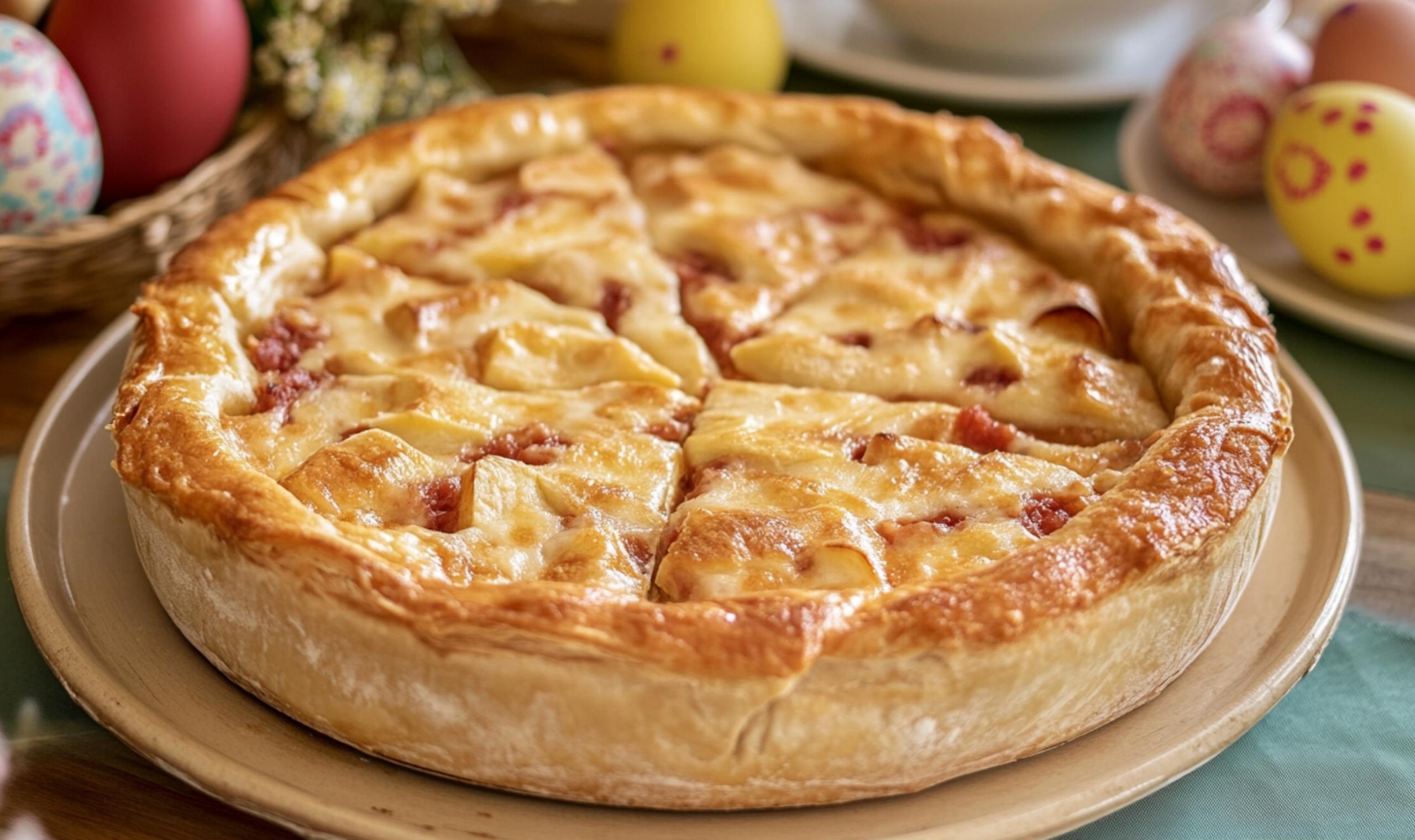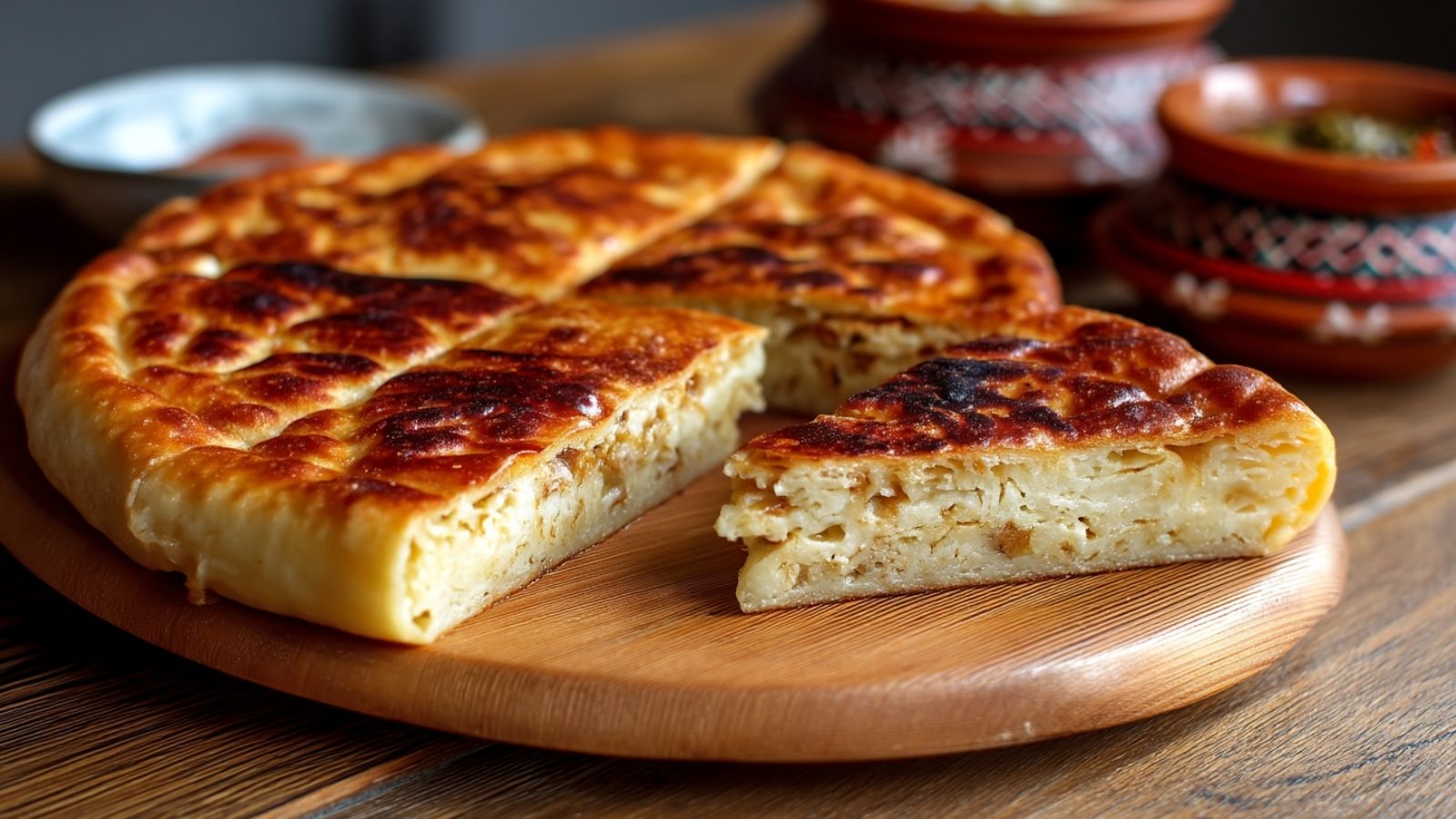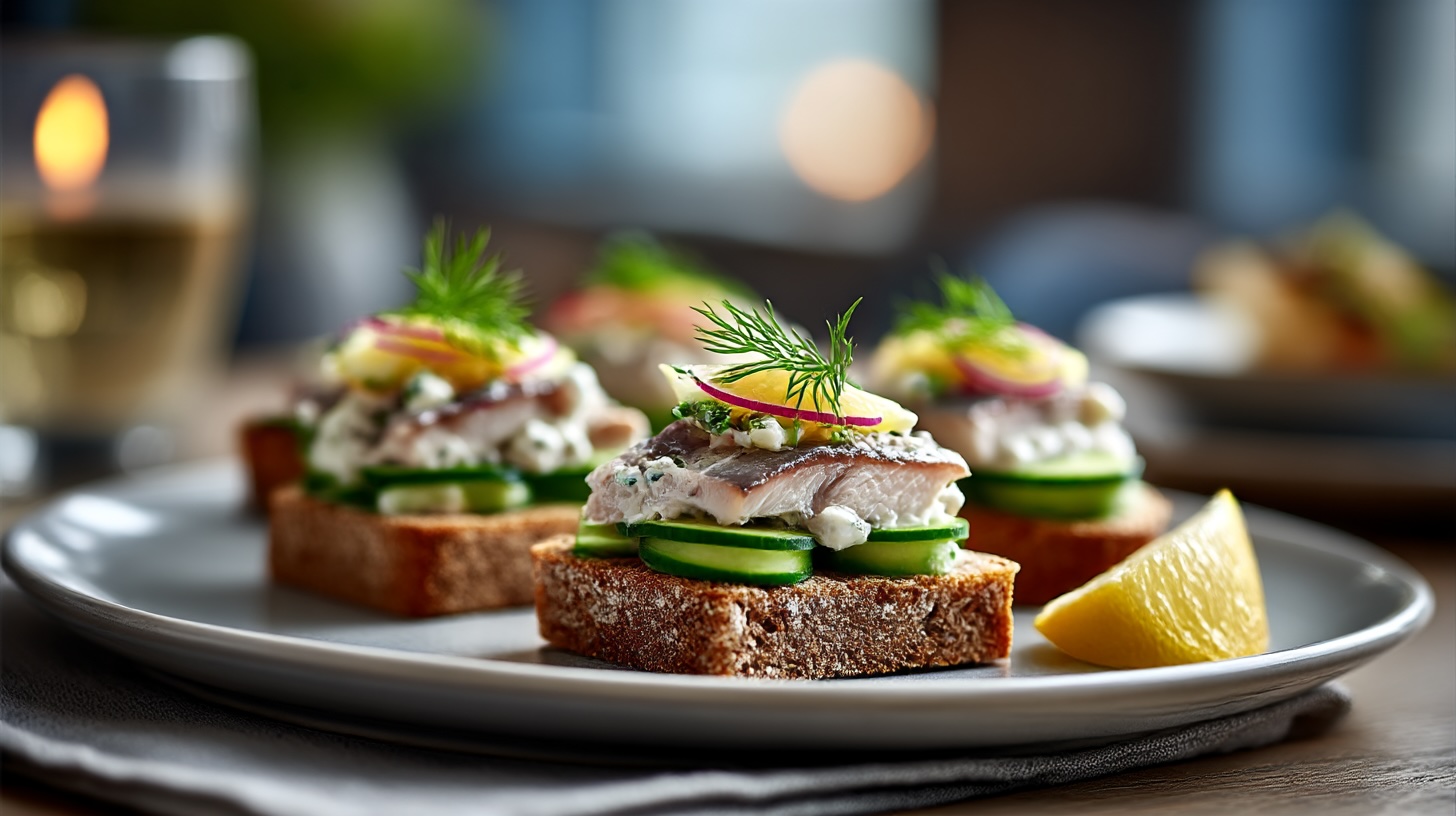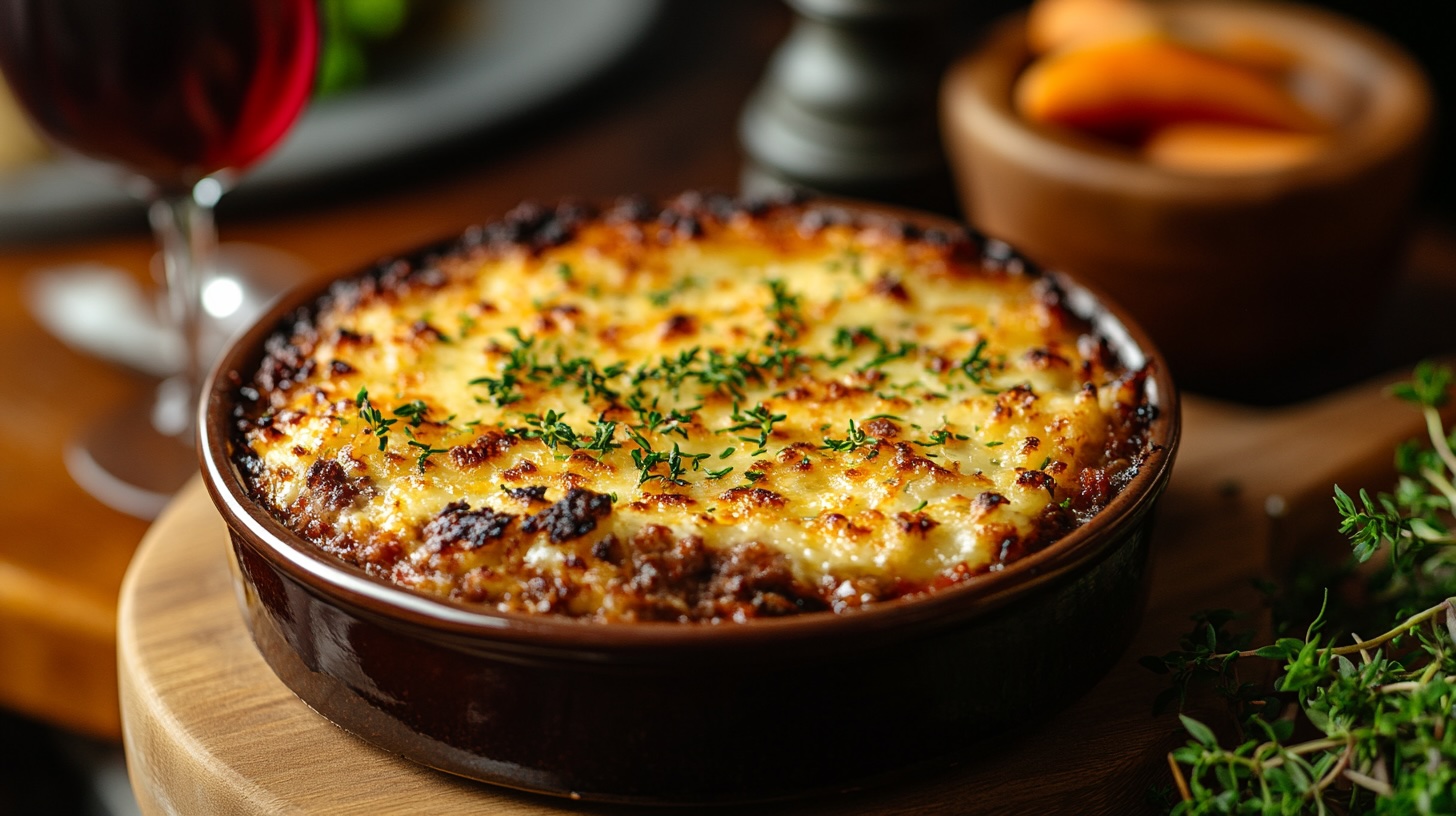Pizza Rustica or Italian Easter Pie
Pizza Rustica, often referred to as “Easter Pie” in some regions, is a traditional Italian dish that showcases the rich culinary heritage of Italy. This savory pie is distinctive for its hearty filling, which typically consists of a combination of meats, cheeses, and eggs, set within a beautifully crafted pastry crust. The origins of Pizza Rustica can be traced back to the southern regions of Italy, particularly Naples and the surrounding Campania area, where embracing local agricultural products and preserving traditions shaped the local cuisine.
Historically, Pizza Rustica has been enjoyed during festive occasions, particularly during Easter celebrations, where it serves as a symbol of abundance and familial bonds. Traditionally made at home, this dish is a celebration of seasonal ingredients, utilizing a variety of locally sourced meats, such as salami, prosciutto, and even seasoned pork. The incorporation of different cheeses, from ricotta to aged pecorino, adds complexity to the flavors, while the inclusion of eggs not only binds the ingredients but also enriches the filling, resulting in a pie that is both nutritious and satisfying.
What sets Pizza Rustica apart from other types of pizza is its depth of flavor and the diversity of its ingredients. Unlike the classic Neapolitan pizza, which prides itself on a simple tomato sauce and mozzarella base, Pizza Rustica offers a more substantial dining experience. This pie is typically baked in a round or rectangular form, allowing for a generous filling and a crispy crust that stands up to the rich ingredients. As a beloved dish in Italian cuisine, Pizza Rustica reflects the cultural importance of food as a means of bringing people together, making it a cherished centerpiece at gatherings and celebrations.
Ingredients
Pizza Rustica, a traditional Italian savory pie, is characterized by its rich filling and distinctive pastry crust. The blend of ingredients not only defines the taste but also embodies the cultural essence of Italian cuisine. Key to this dish are the selection of meats, cheeses, and eggs that create a harmonious filling.
Meats play a pivotal role in the filling of Pizza Rustica. Commonly, a combination of salami, ham, and even pepperoni is utilized. Salami, with its robust flavor profile, adds a spicy kick, while the ham offers a mild sweetness that balances the ensemble. Additionally, regional variations may incorporate pancetta or prosciutto, further enhancing the savory nature of the pie. This assortment of meats contributes both flavor and texture, creating a satisfying mouthfeel in every bite.
Complementing the meats are the cheeses, which serve as a binding agent for the ingredients in this delightful dish. Ricotta is often the primary cheese of choice, providing a creamy richness that contrasts beautifully with the saltiness of the meats. Furthermore, mozzarella is utilized for its melting qualities and neutral flavor, which allows the spices of the meats to shine through. Other regional cheeses, such as pecorino or parmesan, may also be included, adding depth and complexity to the overall flavor profile.
Eggs are another critical component, acting as a binding agent that holds the filling together. The use of eggs contributes to a moist texture while allowing for a cohesive blend of flavors. Finally, the pastry crust encasing the filling is typically made from flour, water, and fat, often lard or olive oil. This crust not only serves as a sturdy vessel for the rich filling but also adds a flaky texture that contrasts with the softness of the interior.
Regional Variations
Pizza Rustica, a quintessential Italian dish, showcases the rich tapestry of regional culinary traditions across Italy. Each locale presents its own interpretation, resulting in a delightful array of flavors and textures that reflect local ingredients and cultural influences. Two notable regions known for their distinctive versions of Pizza Rustica are Campania and Puglia.
In Campania, particularly in Naples, Pizza Rustica is often characterized by a robust filling that features a combination of cured meats, such as salami and prosciutto, alongside fresh cheeses like ricotta and mozzarella. This version emphasizes the use of locally sourced ingredients, with the crust typically being a flaky pastry made from lard, enhancing the pie’s rich flavors. The preparation may also include traditional herbs, providing an aromatic experience. Neapolitan Pizza Rustica is celebrated during festive occasions, including Easter, reflecting the region’s deep-seated culinary customs.
Conversely, in Puglia, the Pizza Rustica presents a heartier approach with a focus on seasonal vegetables in conjunction with meats and cheeses. The Puglian variation often incorporates eggplant, peppers, and artichokes, offering a burst of color and nutrition. The dough is typically made with local olive oil, imparting a unique taste that distinguishes it from the Campanian style. Moreover, this version can be prepared as a thicker, more substantial pie, suitable for sharing during family gatherings or regional celebrations.
Thus, the regional variations of Pizza Rustica highlight not only different ingredients but also the unique culinary narratives shaped by geography and tradition. From the festive gatherings in Campania to the communal meals in Puglia, these pies serve as a delicious testament to the diversity found in Italy’s gastronomic landscape. The distinct approaches to Pizza Rustica showcase how local culture, ingredients, and cooking methods converge to create beloved dishes that resonate with both locals and visitors alike.
The Making of Pizza Rustica
Creating authentic Pizza Rustica, a delightful Italian savory pie, involves several key steps, beginning with the preparation of the flaky pastry crust. For the crust, combine 2 cups of all-purpose flour, ½ cup of cold unsalted butter cut into cubes, and a pinch of salt in a mixing bowl. Gradually add ice water, one tablespoon at a time, until the mixture holds together. Be careful not to overmix; the goal is to create a tender, crumbly texture. Once formed, wrap the dough in plastic wrap and refrigerate it for at least 30 minutes to allow it to chill and firm up, which will result in a better texture once baked.
While the dough is chilling, you can prepare the filling. Begin by gathering assorted meats such as diced prosciutto, salami, and cooked sausage, blending flavors that represent the classic Italian taste. You will also need a selection of cheeses; ricotta and mozzarella are traditional choices, providing a creamy taste. Combine the meats and cheeses in a large mixing bowl. Next, whisk together four eggs, seasoning with salt, black pepper, and herbs such as parsley or basil, and add the mixture to the meat and cheese blend. Stir until everything is evenly mixed, ensuring a harmonious flavor throughout the filling.
After chilling, roll out the pastry dough on a floured surface to fit your pie dish. Carefully lay the dough into the dish, allowing the edges to hang over. Fill it with the meat and cheese mixture and then fold and crimp the edges of the dough. Preheat your oven to 375°F (190°C) and place the pie on the middle rack. Bake for approximately 45 minutes, or until the crust achieves a golden-brown hue and the filling is set. Allow the Pizza Rustica to cool slightly before serving, which will enhance the flavors and improve the texture. This savory pie is perfect for sharing with friends and family, embracing traditional Italian culinary practices right in your own home.
Serving Suggestions and Pairings
Pizza Rustica, a cherished Italian dish, offers a delightful blend of flavors and textures that can be wonderfully complemented by various accompaniments. Traditionally served as a savory pie filled with meats, cheeses, and eggs, this hearty creation can be enjoyed hot or at room temperature, making it a versatile dish for any occasion. When considering serving suggestions, one might start with a simple green salad infused with a light vinaigrette. The fresh crispness of the greens would provide a refreshing contrast to the richness of Pizza Rustica, making the meal more balanced and interesting.
Another traditional accompaniment is roasted or grilled vegetables. Seasonal vegetables, such as zucchini, bell peppers, and eggplant, add a vibrant color and enhance the meal’s nutritional value. The smoky flavors of grilled vegetables pair exceptionally well with the robust tastes found within the pie, creating a harmonious palate experience.
Beverage pairings play an equally important role in elevating the enjoyment of Pizza Rustica. A medium-bodied red wine, such as Chianti or Montepulciano, can beautifully complement the savory elements of the dish, enhancing its meat and cheese notes. For those preferring whites, a crisp Pinot Grigio may also serve as an excellent choice, as its acidity can cut through the richness of the pie.
Additionally, sparkling Italian sodas or even homemade lemonade can act as refreshing alternatives, especially during warmer seasons. The effervescence and slight sweetness of these beverages can cleanse the palate between bites of the flavorful pie. Thus, whether served at a family gathering or as part of a festive celebration, Pizza Rustica can be presented in various styles and with numerous pairing options to ensure a delightful dining experience.
Cultural Significance of Pizza Rustica
Pizza Rustica, a savory pie comprising a rich blend of meats, cheeses, and eggs, holds a prominent place in Italian culture, particularly during festive occasions. This traditional dish is not merely a culinary delight; it serves as a symbol of family unity and cultural heritage. Often prepared for significant celebrations, Pizza Rustica is a staple in households during holidays such as Easter and Christmas, where families gather to honor shared customs and traditions.
The preparation of Pizza Rustica is often a communal activity that brings families together. Grandmothers and mothers frequently pass down their unique recipes from generation to generation, emphasizing the dish’s familial ties. During Easter, for example, it is customary for families to enjoy this pie as part of the festive meal, signifying the end of Lent’s fasting period. This culinary tradition not only reflects the Italian emphasis on family but also highlights the connection to the agricultural bounty of the region, using locally sourced ingredients to create a hearty and fulfilling dish.
Moreover, Pizza Rustica is often served at various celebrations, ranging from birthdays to weddings, illustrating its versatility and significance in Italian culinary practices. The pie is typically made in large quantities, allowing it to be shared among friends and family, reinforcing the value of togetherness in Italian society. In many households, it is not uncommon for stories and laughter to accompany the enjoyment of Pizza Rustica, creating lasting memories that are cherished for years to come.
Ultimately, the cultural significance of Pizza Rustica transcends mere sustenance; it embodies traditions, family bonds, and the spirit of celebration that are central to Italian life. As such, this beloved dish continues to preserve and convey the rich tapestry of Italy’s cultural heritage, making it an enduring symbol of community and festivity.
Health Aspects
Pizza Rustica is a traditional Italian dish enjoyed for its rich flavors and diverse ingredients. However, understanding its health aspects is crucial, especially considering the various components used in its preparation. Typically, this savory pie is composed of a combination of meats, cheeses, and eggs, each contributing to its overall nutritional profile. The caloric content of Pizza Rustica can be significant due to the high-fat ingredients, such as cured meats and cheese. A single serving can range from 350 to 500 calories, depending on the recipe, serving size, and the specific ingredients employed.
Furthermore, Pizza Rustica contains various allergens. Common allergens among its ingredients may include gluten from the crust, dairy from the cheese, and eggs. Individuals with food sensitivities should be cautious when consuming this dish. To make Pizza Rustica a healthier option while maintaining its original essence, several substitutions can be employed. For example, using whole-grain flour instead of all-purpose flour can enhance the fiber content of the crust. Opting for lean meats, such as turkey or chicken sausage, in place of traditional, higher-fat salami or pancetta can significantly reduce calorie intake and saturated fat levels.
Incorporating more vegetables into the filling, such as spinach, mushrooms, or bell peppers, not only increases the nutritional value but also adds texture and flavor without additional calories. Reducing the amount of cheese used or selecting lower-fat variations can further adapt the dish for healthier eating, making it a guilt-free indulgence. These adjustments can help preserve the traditional flavor profile while addressing common dietary concerns associated with Pizza Rustica.
Tips for Perfecting Your Pizza Rustica
When it comes to crafting the perfect Pizza Rustica, several strategies can ensure that your savory pie emerges from the oven as an exceptional culinary delight. First and foremost, focus on the crust. A well-prepared crust acts as the foundation of this dish. To avoid a soggy crust, consider blind baking it for a few minutes before adding the filling. This technique allows the base to partially cook and creates a barrier against moisture from the meat, cheeses, and eggs, ensuring a more robust final product.
Another crucial element is the balance of flavors within your filling. To elevate your Pizza Rustica, opt for a combination of cheeses that complements your chosen meats. A blend of ricotta, mozzarella, and pecorino offers both creaminess and depth. Additionally, incorporating fresh herbs such as basil or parsley provides a burst of freshness that brightens the dish. Experimenting with varied meats—like salami, ham, or pancetta—can introduce unique flavors, making your Pizza Rustica stand out.
Cooking temperatures and times also play a vital role in achieving the desired consistency and flavor. Baking your Pizza Rustica at a high temperature, typically around 375°F to 400°F, promotes a golden-brown crust while ensuring the filling cooks evenly. A thermometer can be invaluable for checking the internal temperature of the pie, which should reach at least 160°F to guarantee that the eggs are fully set and safe to consume.
Lastly, allow the Pizza Rustica to rest for a few minutes after you remove it from the oven. This resting period not only aids in slicing but allows the flavors to meld beautifully. With these tips, creating a delicious Pizza Rustica will surely be a rewarding endeavor, delighting anyone lucky enough to enjoy a slice of your creation.
Pizza Rustica: Italy’s culinary heritage
In conclusion, Pizza Rustica emerges as a delectable representation of Italy’s rich culinary heritage. This savory pie, characterized by its enticing combination of meats, cheeses, and eggs, exemplifies the vibrant flavors and hearty ingredients that define Italian cuisine. Throughout the exploration of Pizza Rustica, we have delved into its traditional preparation methods, regional variations, and the history that has shaped its popularity. The inclusion of various ingredients not only highlights the versatility of this dish but also reflects the local agricultural bounty, showcasing how regional specialties can elevate a simple meal into a celebratory feast.
The charm of Pizza Rustica lies not only in its taste but also in its spirit of sharing and togetherness. This dish often graces festive occasions, serving as a centerpiece that brings family and friends around the table. As Italian culinary traditions emphasize the importance of cooking together and celebrating communal meals, crafting a Pizza Rustica can be a rewarding experience in itself. With a bit of creativity and personal touches, anyone can adapt the recipe to suit their preferences or dietary needs, making it accessible for everyone to enjoy.
We encourage you to embark on your own culinary adventure by attempting to make a Pizza Rustica at home. The process of selecting fresh ingredients, rolling out the dough, and baking the pie can be immensely gratifying. Whether you choose to follow a traditional recipe or innovate with your own flair, the joy of crafting this savory pie is an experience worth having. Ultimately, Pizza Rustica represents more than just a dish; it serves as a delicious reminder of the connections made over food and the joy found in shared culinary experiences.



